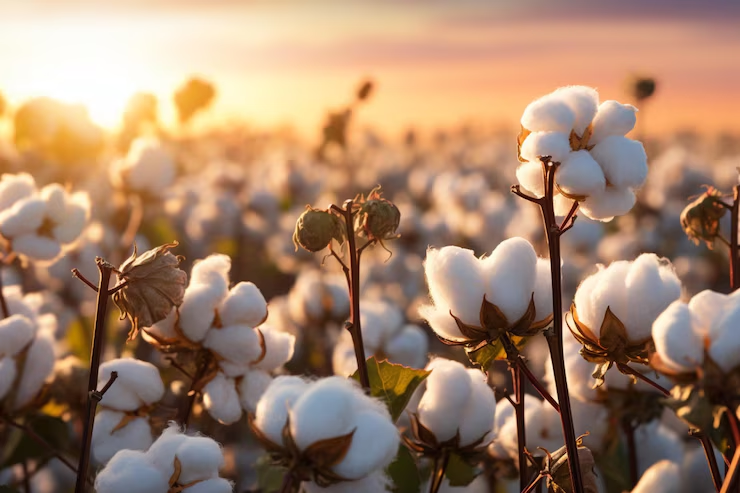
Most of the time, cotton fabric is used in the textile industry and many other industries. It has thousands and thousands of years of history. Since ancient civilizations, it has been cultivated and used for textiles. It can be used for everything from everyday clothing to big home products. As it grows in warm climates, cotton exhibits greater versatility than many other fabrics.
Let’s understand everything about cotton fabric in this article. If you are a beginner in the textile industry, read this complete article to get more information on all your questions about this versatile fabric.
What is cotton fabric?
Cotton fabric is derived from the fibers of the cotton plant, which are soft and breathable. As the cotton plant matures, its seeds become surrounded by cotton fibers, which are harvested and processed to create fabric.
How cotton grows and becomes fabric
Cotton needs a lot of sunlight and grows best in warm climates. It also requires fertile soil and moderate rainfall or regular watering to thrive.
The cotton plant goes through several stages of growth. It begins as a seed and develops leaves, stems, and flowers. After flowering, cotton bolls are formed. These bolls burst open when the cotton is ready to be harvested, usually in late summer or early autumn.
After harvesting, the cotton fibers are separated from the seeds in a process called ginning. The cleaned fibers are then spun into yarn or thread.
History of cotton
Cotton (Gossypium hirsutum) has been cultivated for thousands of years. It is one of the oldest crops grown by humans. The earliest evidence of cotton farming dates back about 5,000 years in regions such as India and Egypt.
In the 18th century, cotton became even more popular. However, separating the seeds from the cotton fibers was a slow and difficult task. To make this process easier, Eli Whitney invented the cotton gin in 1793. The cotton gin is a machine that quickly and efficiently separates cotton fibers from their seeds. This invention made cotton production much faster and more cost-effective.
Today, cotton remains a widely used material in the textile industry and is cultivated in many countries worldwide. The top cotton-producing countries include China, India, the United States, Brazil, and Australia.
Cotton fiber production saw a slight decline, dropping from 25.1 million tonnes in 2021/22 to 24.4 million tonnes in 2022/23. Polyester remains the most commonly used fiber in fabric manufacturing due to its fast production, wrinkle resistance, and low cost. Cotton ranks second, accounting for about 20% of global fiber output.
Benefits of cotton fabric
According to studies, it is particularly in hot weather that 80% of people prefer cotton clothes for their comfort over synthetic clothing. Cotton farming takes place in many countries, particularly in regions of Asia, Africa, and Latin America. The cotton industry supports the livelihoods of many farmers in rural areas.
Cotton is easier to wash and care for as compared to other fabrics. It is not clingy and needs low maintenance. It is hypoallergenic, odor-free, and also eco-friendly. It is also natural, very comfortable, and biocompostable. One of the great benefits is their moisture-wicking, quick-drying properties, and you can wear them any season.
Cotton fabric closing thoughts
By understanding cotton, you can make better choices for your natural dyeing projects. Cotton is an excellent fabric because it absorbs natural dyes beautifully, producing rich and vibrant results. Overall, cotton remains one of the best fabrics for natural dyers due to its softness, durability, and ability to hold color well. We hope this guide has given you some helpful insights into cotton fabric.
Are you searching for a sustainable cotton fabric? At Fibre Bio, we offer natural and sustainable-quality fabrics and products. Our eco-friendly fabrics include cotton, organic cotton, recycled cotton, silk, wool, kala cotton, linen, wild silk, khadi cotton, and many more.
Still have any questions? To get more information, contact us directly at contact@fibrebio.com.
